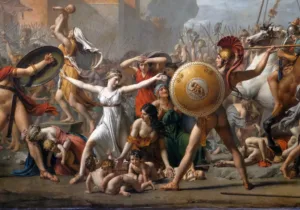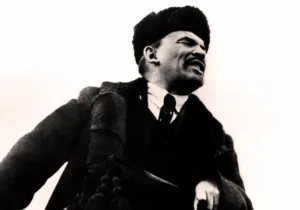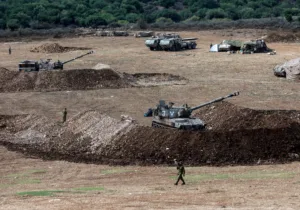This article about how the U.S. intelligence community missed the Iranian Revolution first appeared in the Summer 2016 issue of Providence’s print edition. To read the original in a PDF format, click here. To receive future issues before they appear online, subscribe here.
“A devotee who sits in a corner not for God’s sake
Is helpless. What can he see in a dark mirror?”
— Saadi Shirazi, Persian poet (1184-1283)1
In the aftermath of the 1979 Iranian Revolution, a State Department official summed up the confused state of American intelligence when he exclaimed, “Whoever took religion seriously?”2 Among the many intelligence failures leading up to the overthrow of the Shah—rivalry between competing agencies, unmerited “group-think” optimism about the Shah’s resilience, over-reliance on official intelligence channels, and the naive desire for America’s investment in Iran to pay off—the total disregard for Islam as a political force is perhaps the most egregious. Although post-9/11 American foreign policy is painfully aware of the dangers posed by political Islam, too many intelligence analysts still hold secular biases about the nature of man, giving short shrift to religion as a political force. Inattentiveness to Iran’s religious context prior to 1979 underlines the dire need for awareness of religions in American foreign policy.
In her book On Revolution, Hannah Arendt writes, “Secularization, the separation of religion and politics and the rise of a secular realm with a dignity of its own, is certainly a crucial factor in the phenomenon of revolution.”3 Operating on this basic assumption, the State Department presumed that third world countries would progressively secularize their politics as they developed socially and economically. Meanwhile, in her dealings with Iran during the decades leading up to 1979, the United States was primarily focused on bolstering the Persian nation as a bulwark against communism.
A then-classified CIA briefing shortly after the assassination of Premier Raxmara in March 1951 demonstrates an awareness of nationalist and socialist threats to stability, but glosses over religious influences.4 Indeed, the organization responsible for the assassination, the Friends of Islam, received hardly a passing mention in the document. The briefing provided to the Truman administration rightly concluded that the situation was unlikely to result in upheaval of the Shah’s government. Nevertheless, the CIA was solely concerned with the Soviet Union’s potential to work through secular socialist and nationalist movements to destabilize the regime.
The CIA concluded that, though the popular nationalist movement was large, it appeared disorganized and had little representation in the Majlis (the Iranian parliament).5 When nationalists did pose a threat in 1953, the CIA helped oust Prime Minister Mosaddegh to solidify the Shah’s power. The small group of Soviet sympathizers in the illegal Tudeh Party had no power to disrupt the Shah’s authority. Based on the CIA’s analysis, the number of armed forces and police were adequate to maintain order against nationalist groups or pro-Soviet groups. To the CIA’s knowledge, these forces were still loyal to the Shah.6 These conclusions about the Shah’s position became axiomatic and remained relatively stagnant until 1979.
A 1962 CIA document estimating the political prospects for Iran summarized the situation as being under control so long as the Shah could maintain the loyalty of the army and security forces.7 They criticized previous reports for being overly “pessimistic about the prospects for political stability in Iran”8 and suggested that nationalist and socialist dissenters were unlikely “to develop both the will and the capability to overthrow the Shah”9 for some time to come. Nevertheless, the authors harbored no unrealistic optimism and warned that “each time a serious crisis occurs, the possibility of his overthrow or even his voluntary abdication will be present.” They cautioned that over the long term, “profound political and social changes appear virtually inevitable.”10
Once again, however, a neurotic focus on the nationalist movement and infiltration from the Tudeh communist party overlooked the religious dynamic of Persian civic and cultural life. Within a year, massive riots rocked Tehran. The riots were not led by nationalist or communist oppositions, as the CIA predicted, but by the radical Islamic cleric Ruhollah Khomeini reacting to an American-backed development program.11 Khomeini perceived the Shah’s “White Revolution” as an importation of Western values odious to Iran’s Muslim heritage. The Shah survived the unrest and brutally put down the rioters, sending Khomeini into exile.
The CIA misdiagnosed the root of the cleric’s malcontentment, for Khomeini’s vision for Iran was pan-Islamic, not nationalistic. Even before his return to Iran, he “worked hard to prevent the revolutionary movement from assuming patriotic colors.”12 He warned against “nationalist feelings” which “are opposed to the very foundations of religion,” and once told visitors that “all this talk about being Iranians and what we should do for Iran is not correct.”13 In Khomeini’s view, there could be no national identity, only the ummah.
The Shah discouraged American intelligence contact with Iran’s clerics. Walter Cutler, an American diplomat instructed to gather intelligence on the mullahs in the 1960s, recalled the Shah sending a clear message not to “mess around with the religious elements.”14 In the 1970s, Kissinger’s State Department deterred any engagement with the Iranian religious elements and focused on the Cold War objective of monitoring communist sympathizers. The last American ambassador to Iran, William Sullivan, expressed concern at his appointment that he “had never lived in the Islamic world and knew little about its culture or its ethos.”15 American intelligence observers, interacting primarily with westernized English-speaking Iranian elites and preoccupied with the threat of communism, remained blissfully ignorant to the strong religious undercurrents of Iranian culture.
Exploiting the secular blind spot of the Shah’s Western allies, Khomeini successfully “devised revolutionary tactics which stemmed from the specific religious-cultural environment of Shi’a Iran.”16 Over the centuries, Shi’a Islam in Persia had developed a hierarchy of religious authority superior to and distinct from civil authority, which provided a religious doctrine for overthrowing the Shah and made it possible for the mullahs to lead a revolution.17
While in exile, Khomeini released taped messages to the Islamic faithful encouraging resistance, which were spread through the Komitehs (religious committees) in mosques.18 The role of the mosque was crucial to the revolution because “it was impractical for the state to regularly suppress the mosque, it offered opportunities to the revolutionaries that no other place did.”19 The Komitehs clandestinely formed the revolutionary network that eventually led to the creation of the Islamic Revolutionary Council in 1979. American academic James Bill writes that it was the structure within “their mosques, schools, cells (hojrehs), and holy shrines” that “mobilized the population and that was ultimately responsible for the destruction and collapse of the Pahlavi regime.”20
It was not simply a popular Islamic awakening, however. The Iranian working and lower middle class “were as religious during the Shah’s rule as they are now… They can hardly be said to have undergone an Islamic revival: they have been deeply religious all along.”21 Meanwhile the secular, Westernized ruling class of the Pahlavi government stood aloof from the religio-cultural environment of the common people. Khomeini merely exploited the disconnect.
Charles Naas, Director of Iranian Affairs at the State Department between 1974 and 1978, wrote that CIA reports believed “that the religious right didn’t represent a threat to the regime.”22 Of course, no threat was perceived because no investigation was done: “There was practically no reporting on the Islamic groups in the country, so we were caught relatively flat-footed,” he said.23 The CIA’s 1977 report “Iran in the 1980’s” concluded that “the shah will be an active participant in Iranian life well into the 1980s” and that “there will be no radical change in Iranian political behavior in the near future.”24 Carter’s CIA director, Stansfield Turner, later admitted, “In 1977, Islam as a political force was not on our radar scope. The intelligence community was not prepared to understand it.”25
In March 1977, leading Islamic intellectual Ali Asghar Hajj Sayyed Javadi wrote an open letter critical of the Shah and a subsequent critique of the modernization of Iran which was distributed widely among the public. When the Shah did not respond with repression, dissident literature multiplied.26 An anti-Shah article, published in a popular periodical in January 1978, fanned the flames of religious dissidence in the spiritual center of Persia, Qom, and inspired the madrases to close down in protest of the regime. Religious students engaged in a tense stand-off with the military, but security forces balked at killing civilians. Sensing the Shah’s weakness and the military’s hesitation, Khomeini ordered more demonstrations. The editors of The Dawn of the Islamic Revolution wrote that “Ramadan sermons provided a perfect and powerful vehicle for spreading a basically political message, urging men to rise and act against tyranny.”27 The result? “Anti-Shah sentiment rose sharply.”
As demonstrations blossomed, Khomeini spoke directly to the military and thanked them for refusing to fire on protesters. He sought to exploit the wedge between mosque and secular state by appealing to the soldiers’ decency as Muslim brothers. Khomeini pled with soldiers “who are faithful to Islam”28 to refrain from shooting other followers of the Prophet, for it would be like “firing at the Quran” itself.29 As standoffs grew more tense and frequent in late 1978, the military proved that Khomeini’s faith was not misplaced: apart from isolated incidents there would be no mass killings of civilians. In many cases, the military, which the CIA classified as intensely loyal to the Shah, was actually aiding the revolutionaries.
Robert Jervis, Professor of International Affairs at Columbia University, suggests that at this time, “analysts didn’t understand the nature of the opposition, particularly the religious dimension—which was dismissed as an anachronism.”30 America expected that the Shah would respond to opposition the way he did in 1953 and in 1963, with brutal crack-downs and power solidification, despite its incompatibility with the Carter administration’s pressure on Iran for democracy and respect for human rights. American intelligence did not consider plausible alternative responses and persisted in believing their intelligence models—“disconfirmable” predictions that could only be demonstrated false once the Shah was overthrown.31
In 1978, the CIA made its infamous confidential claim that “Iran is not in a revolutionary or even a ‘pre-revolutionary’ situation.”32 The Defense Intelligence Agency (DIA) concurred, issuing its opinion that although the situation was turbulent, “there is no threat to the stability of the shah’s rule.”33 Even in late September 1978, the DIA would not recant, doubling down with its prediction that the “shah is expected to remain actively in power over the next 10 years.”34
It was not until “late November 1978 that the intelligence community considered that the Shah might fall.”35 Even still, American intelligence downplayed the religious nature of the uprising: “a military regime was seen as a likely successor, with a radical government based on the religious opposition less likely.”36 Conventional wisdom suggested that the mosque would “serve as the transmission belt of the revolution,” but that “its political importance would quickly wane once its initial objectives had been achieved.”37 James Bill even asserted that the mullahs “would never participate directly in the formal government structure.”38
Eyewitness accounts indicated otherwise: French philosopher Michel Foucault reported “an explosion of spiritual energy in the streets… a sudden intrusion of religion in the affairs of the city” when he visited Tehran in late 1978.39 The events of early 1979 proved the academics and diplomats wrong. The military defected, the Shah fled, and Khomeini installed himself as Grand Ayatollah of the new Islamic Republic of Iran.
Foreign observers had futilely attempted to categorize the distinctly religious revolution into familiar categories from secular experience. Gray Sick, aide for Persian Gulf Affairs in Carter’s National Security Council, later wrote that the “tension between the secular and the religious was a major contributing factor to the failure… to recognize the revolution in its early stages and to gauge properly its actual course and eventual outcome.”40 Because of skepticism toward the “notion of religion as the rallying point for social revolution,” Sick says almost everyone “misjudged the power… [and] the nature of the popular appeal” of the 1979 revolution.41
In retrospect, it is easy to criticize the intelligence community’s massive oversight of the religious dimension present in the Iranian revolutions. Instead of engaging in blame-casting, modern students of international relations should seek to learn from the neglect of religion during this tumultuous period in foreign policy. Diplomatic and intelligence communities must be intimately aware of man’s spiritual dimension if they wish to understand and predict the trajectory of political forces. American foreign policy simply cannot afford to operate within a secular vacuum.
—
Josh Craddock is a student at Harvard Law School. He lives in Cambridge with his wife and son.
Photo Credit: During the 1978 Iranian Revolution, a row of men holding Khomeini’s photo. Photographer unknown. Via Wikimedia Commons.
—
- Shirazi, Saadi. “On Rules For Conduct In Life: Maxim 42.” The Gulistan. Kessinger, 2004. Print. p. 157
- Sick, Gary. All Fall Down: America’s Fateful Encounter with Iran. London: I.B. Tauris &, 1985. Print. p. 165
- Arendt, Hannah. On Revolution. New York: Penguin, 1965. Print. p. 26
- United States of America. Central Intelligence Agency. The Current Crisis in Iran. Special Estimate. CIA, 16 March 1951. Freedom of Information Act Electronic Reading Room.
- Id.
- Id.
- United States of America. Central Intelligence Agency. Political Prospects for Iran. 34-62 ed. CIA, 7 Sept 1962. Special National Intelligence Estimate. Freedom of Information Act Electronic Reading Room.
- Id. at 2
- Id. at 4
- Id.
- Moens, Alexander. “President Carter’s Advisers and the Fall of the Shah.” Political Science Quarterly2 (Summer 1991): 211-37. JSTOR.
- Taheri, Amir. The Persian Night: Iran under the Khomeinist Revolution. New York: Encounter, 2009. Print. p. 55
- Id. at 62
- Dreyfuss, Robert. Devil’s Game: How the United States Helped Unleash Fundamentalist Islam. New York: Metropolitan, 2005. Print. p. 230
- Zonis, Marvin. “IRAN: A Theory of Revolution From Accounts of the Revolution.” World Politics4 (July 1983): 586-606. JSTOR. Web. 24 Apr. 2013.
- Hiro, Dilip. Iran Under the Ayatollahs. London: Routledge & K. Paul, 1985. Print. p. 100
- Rubin, Barry M. Paved with Good Intentions: The American Experience and Iran. New York: Oxford UP, 1980. Print. p. 6
- Hiro, Iran Under the Ayatollahs at 69.
- Id. at 100.
- Bill, James A. “Power and Religion in Revolutionary Iran.” Middle East Institute1 (Winter 1982): 22-47. JSTOR. p. 2
- Hiro, Iran Under the Ayatollahs at 5.
- Dreyfuss, Devil’s Game at 229.
- Id.
- Id.
- Id. at 230.
- Hiro, Iran Under the Ayatollahs at 68.
- Id. at 74.
- Id. at 76.
- Id. at 100.
- Froscher, Torrey. “Why Intelligence Fails: Lessons from the Iranian Revolution and the Iraq War.” Studies in Intelligence3 (2010): 238. Center for the Study of Intelligence. Web.
- Id.
- Dreyfuss, Devil’s Game at 229.
- Seliktar, Ofira. Failing the Crystal Ball Test: The Carter Administration and the Fundamentalist Revolution in Iran. Westport, CT: Praeger, 2000. Print. p. 92
- Id.
- United States of America. Central Intelligence Agency. Memorandum for Director of Central Intelligence. CIA, 6 Jan 1984. Freedom of Information Act Electronic Reading Room. p. 2
- Id.
- Sick, All Fall Down at 165.
- Id.
- Taheri, The Persian Night at 76.
- Sick, All Fall Down at 164.
- Id. at 167.





